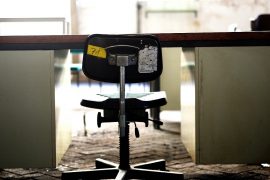Saturday, October 2, 2021
curfew lifted
The air is better again on the volcanic island of La Palma
The air is better again on the volcanic island of La Palma
Daily life is becoming easier for the approximately 3800 residents of La Palma. They have been allowed to leave their homes again. But this is not yet a reason to breathe a sigh of relief. “Here you see a lot of people crying all the time,” says one resident. The end of the volcanic eruption is not in sight.
Nearly two weeks after the volcano erupted on the Canary Islands of La Palma, about 3,800 residents of directly affected areas are allowed to leave their homes. Due to the improvement in air quality, several curfews imposed in the cities of Los Llanos, Tzacort and El Paso south of La Palma over the past few days have been lifted, state television broadcaster RTVE reported, citing competent authorities. Spanish island in the Atlantic off the west coast of Africa.
A new chimney was built during the day on the volcano in the Cumbre Vieja ridge. However, there is still no evidence that areas that have previously been spared from lava flows are at risk, the Canary Islands Volcanoes Institute (INVOLCAN) said. According to official reports, more than a thousand buildings have been destroyed by the lava, whose temperature is about 1000 degrees. About 6,000 residents of several areas were evacuated. “Here you can see a lot of people crying all the time,” an old man told RTVE.
The area covered with a black, metre-thick layer of lava, including parts of a cemetery on La Palma, has now been corrected by the European Copernicus Earth Monitoring System to 367 hectares. There was talk of 709 hectares on Friday. As per the latest official information, more than 3,300 hectares of land is affected by the black ash rain. This roughly equals the area of a total of 4500 football fields.
La Palma, less known to tourists than other Canary Islands such as Tenerife, Gran Canaria, Fuerteventura or Lanzarote, was declared a disaster area on Tuesday. According to regional government estimates, damage has already been caused by several hundred million euros. Banana cultivation, which is vitally important to the island and where nearly half of its 85,000 inhabitants live directly or indirectly and which was already in peril from the volcanic eruption, is particularly hard hit.
With the first eruption since 1971, the unnamed volcano has been emitting large amounts of rocks, lava, smoke and ash almost continuously since 19 September. Even experts cannot say how long it will remain active. This may take weeks or months.

Introvert. Proud beer specialist. Coffee geek. Typical thinker. Pop culture trailblazer. Music practitioner. Explorer.





